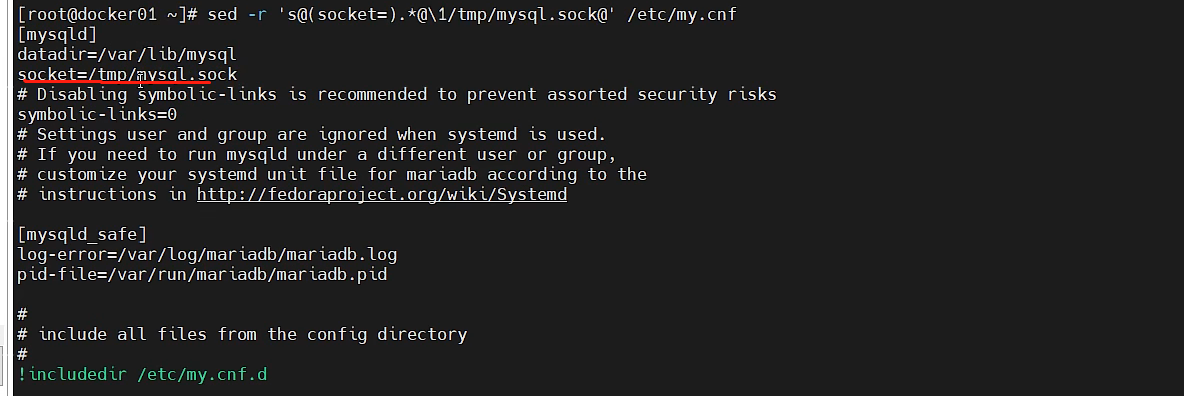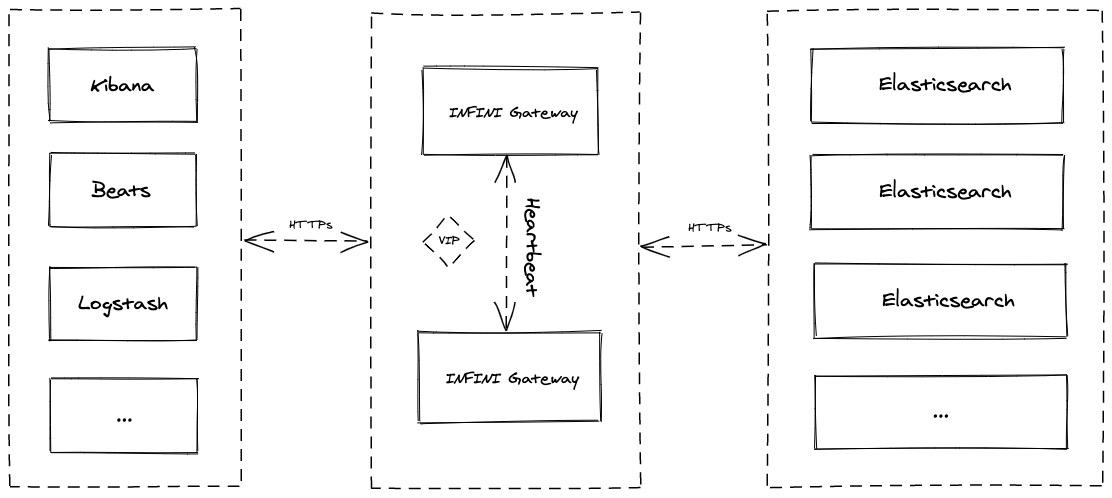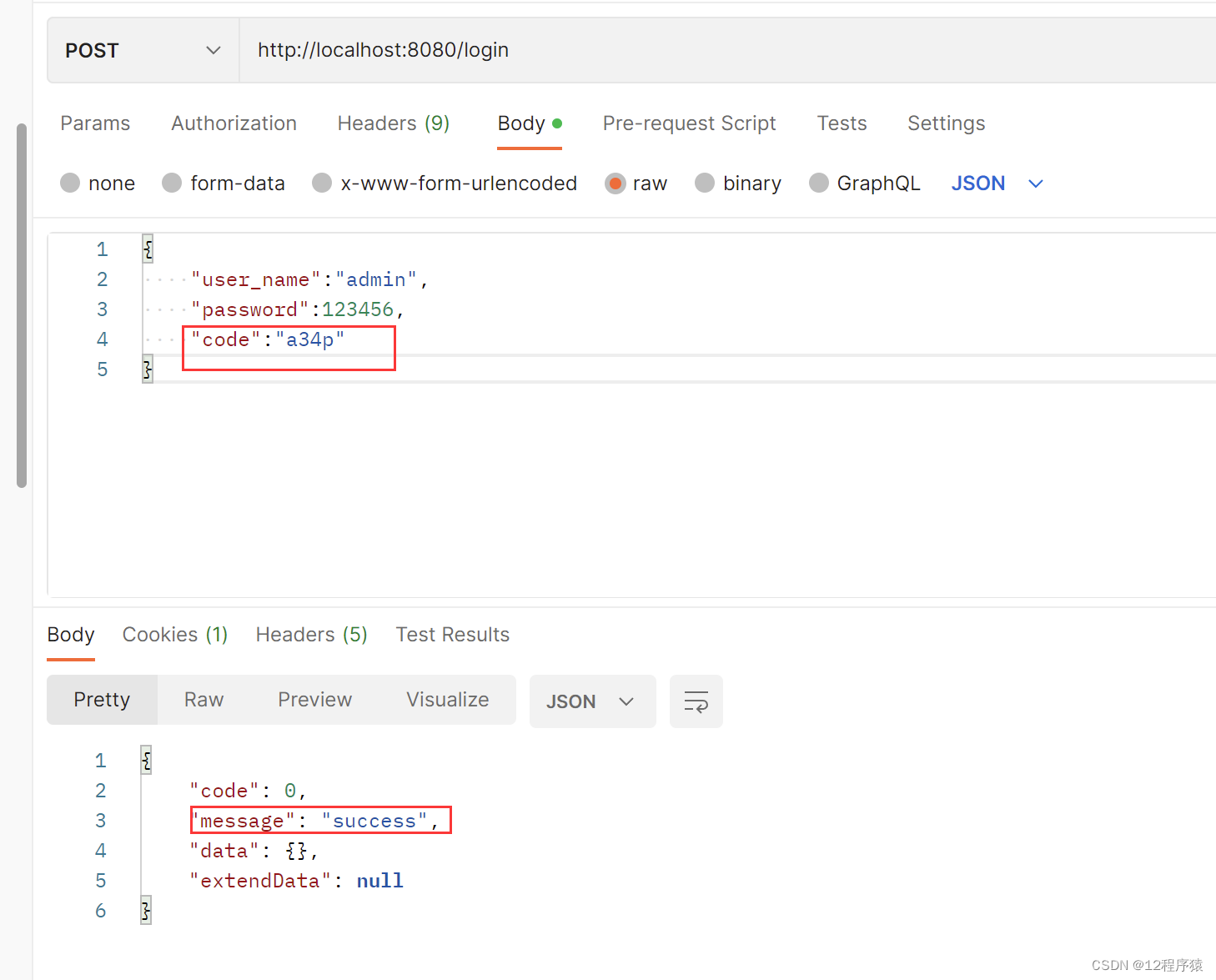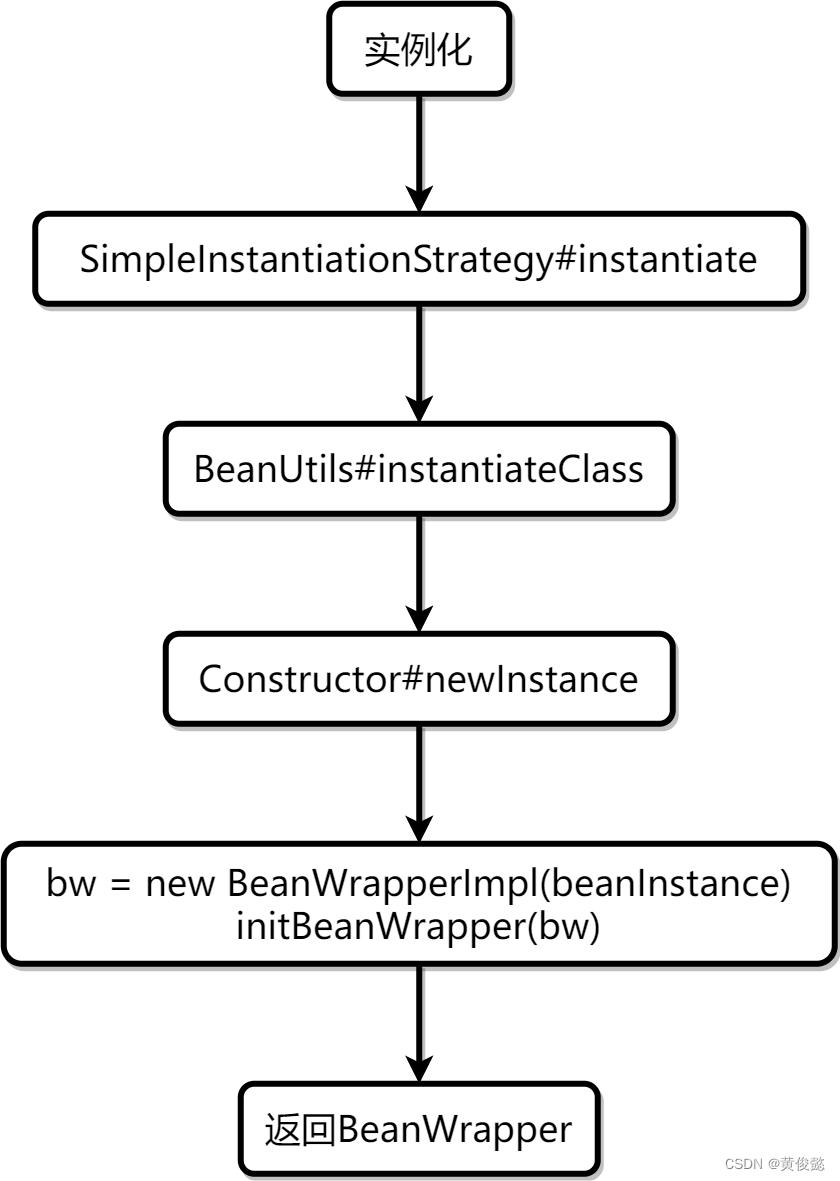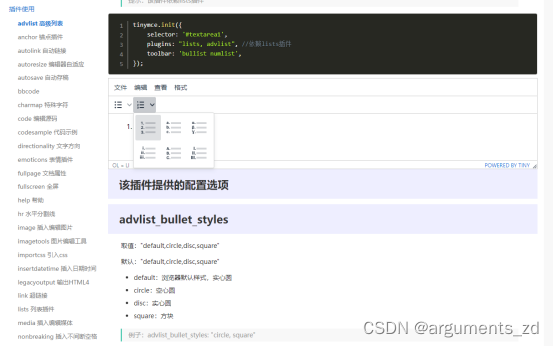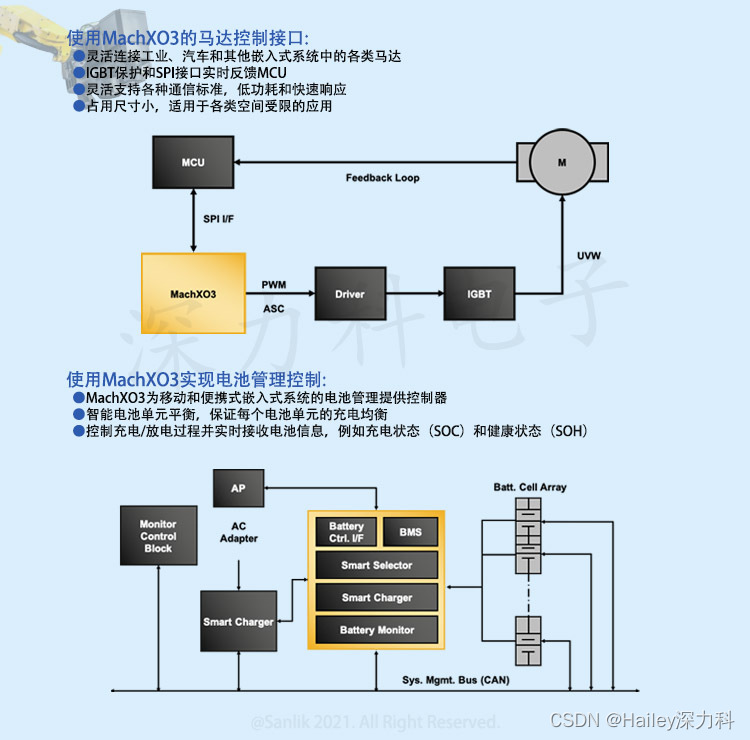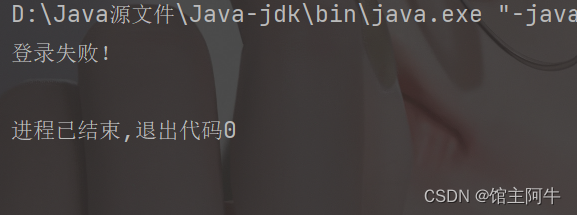目录
- 2.3 安装Logstash
- (1)检查系统jdk版本
- (2)下载logstash
- (3)安装logstash
- (4)配置logstash
- (5)启动与测试
- 方法1
- 方法2(主要的使用方式)
- (6)总结
- 2.4 安装Kibana
- (1)检查系统jdk版本
- (2)下载kibana
- (3)安装kibana
- (4)配置kibana
- (5)启动kibana
- (6)打开kibana
- 参考资料
- 关联博文
2.3 安装Logstash
官方安装包下载地址:https://www.elastic.co/cn/downloads/logstash
(1)检查系统jdk版本
同2.1
(2)下载logstash
wget https://artifacts.elastic.co/downloads/logstash/logstash-8.2.3-x86_64.rpm
(3)安装logstash
rpm -ivh logstash-8.2.3-x86_64.rpm
警告:logstash-8.2.3-x86_64.rpm: 头V4 RSA/SHA512 Signature, 密钥 ID d88e42b4: NOKEY
准备中... ################################# [100%]
正在升级/安装...
1:logstash-1:8.2.3-1 ################################# [100%]
[root@vms31 opt]#
(4)配置logstash
在实验过程中,一般来说对于logstash的配置文件是不需要配置的,保持默认即可。
logstash的配置文件位于:/etc/logstash/logstash.yaml
# Settings file in YAML
#
# Settings can be specified either in hierarchical form, e.g.:
#
# pipeline:
# batch:
# size: 125
# delay: 5
#
# Or as flat keys:
#
# pipeline.batch.size: 125
# pipeline.batch.delay: 5
#
# ------------ Node identity ------------
#
# Use a descriptive name for the node:
#
# node.name: test
#
# If omitted the node name will default to the machine's host name
#
# ------------ Data path ------------------
#
# Which directory should be used by logstash and its plugins
# for any persistent needs. Defaults to LOGSTASH_HOME/data
#
path.data: /var/lib/logstash #logstash数据的存放目录
#
# ------------ Pipeline Settings --------------
#
# The ID of the pipeline.
#
# pipeline.id: main
#
# Set the number of workers that will, in parallel, execute the filters+outputs
# stage of the pipeline.
#
# This defaults to the number of the host's CPU cores.
#
# pipeline.workers: 2
#
# How many events to retrieve from inputs before sending to filters+workers
#
# pipeline.batch.size: 125
#
# How long to wait in milliseconds while polling for the next event
# before dispatching an undersized batch to filters+outputs
#
# pipeline.batch.delay: 50
#
# Force Logstash to exit during shutdown even if there are still inflight
# events in memory. By default, logstash will refuse to quit until all
# received events have been pushed to the outputs.
#
# WARNING: Enabling this can lead to data loss during shutdown
#
# pipeline.unsafe_shutdown: false
#
# Set the pipeline event ordering. Options are "auto" (the default), "true" or "false".
# "auto" automatically enables ordering if the 'pipeline.workers' setting
# is also set to '1', and disables otherwise.
# "true" enforces ordering on the pipeline and prevent logstash from starting
# if there are multiple workers.
# "false" disables any extra processing necessary for preserving ordering.
#
# pipeline.ordered: auto
#
# Sets the pipeline's default value for `ecs_compatibility`, a setting that is
# available to plugins that implement an ECS Compatibility mode for use with
# the Elastic Common Schema.
# Possible values are:
# - disabled
# - v1
# - v8 (default)
# Pipelines defined before Logstash 8 operated without ECS in mind. To ensure a
# migrated pipeline continues to operate as it did before your upgrade, opt-OUT
# of ECS for the individual pipeline in its `pipelines.yml` definition. Setting
# it here will set the default for _all_ pipelines, including new ones.
#
# pipeline.ecs_compatibility: v8
#
# ------------ Pipeline Configuration Settings --------------
#
# Where to fetch the pipeline configuration for the main pipeline
#
path.config: /etc/logstash/conf.d #定义管道配置文件目录
#
# Pipeline configuration string for the main pipeline
#
# config.string:
#
# At startup, test if the configuration is valid and exit (dry run)
#
# config.test_and_exit: false
#
# Periodically check if the configuration has changed and reload the pipeline
# This can also be triggered manually through the SIGHUP signal
#
# config.reload.automatic: false
#
# How often to check if the pipeline configuration has changed (in seconds)
# Note that the unit value (s) is required. Values without a qualifier (e.g. 60)
# are treated as nanoseconds.
# Setting the interval this way is not recommended and might change in later versions.
#
# config.reload.interval: 3s
#
# Show fully compiled configuration as debug log message
# NOTE: --log.level must be 'debug'
#
# config.debug: false
#
# When enabled, process escaped characters such as \n and \" in strings in the
# pipeline configuration files.
#
# config.support_escapes: false
#
# ------------ API Settings -------------
# Define settings related to the HTTP API here.
#
# The HTTP API is enabled by default. It can be disabled, but features that rely
# on it will not work as intended.
#
# api.enabled: true
#
# By default, the HTTP API is not secured and is therefore bound to only the
# host's loopback interface, ensuring that it is not accessible to the rest of
# the network.
# When secured with SSL and Basic Auth, the API is bound to _all_ interfaces
# unless configured otherwise.
#
# api.http.host: 127.0.0.1
#
# The HTTP API web server will listen on an available port from the given range.
# Values can be specified as a single port (e.g., `9600`), or an inclusive range
# of ports (e.g., `9600-9700`).
#
# api.http.port: 9600-9700
#
# The HTTP API includes a customizable "environment" value in its response,
# which can be configured here.
#
# api.environment: "production"
#
# The HTTP API can be secured with SSL (TLS). To do so, you will need to provide
# the path to a password-protected keystore in p12 or jks format, along with credentials.
#
# api.ssl.enabled: false
# api.ssl.keystore.path: /path/to/keystore.jks
# api.ssl.keystore.password: "y0uRp4$$w0rD"
#
# The HTTP API can be configured to require authentication. Acceptable values are
# - `none`: no auth is required (default)
# - `basic`: clients must authenticate with HTTP Basic auth, as configured
# with `api.auth.basic.*` options below
# api.auth.type: none
#
# When configured with `api.auth.type` `basic`, you must provide the credentials
# that requests will be validated against. Usage of Environment or Keystore
# variable replacements is encouraged (such as the value `"${HTTP_PASS}"`, which
# resolves to the value stored in the keystore's `HTTP_PASS` variable if present
# or the same variable from the environment)
#
# api.auth.basic.username: "logstash-user"
# api.auth.basic.password: "s3cUreP4$$w0rD"
#
# ------------ Module Settings ---------------
# Define modules here. Modules definitions must be defined as an array.
# The simple way to see this is to prepend each `name` with a `-`, and keep
# all associated variables under the `name` they are associated with, and
# above the next, like this:
#
# modules:
# - name: MODULE_NAME
# var.PLUGINTYPE1.PLUGINNAME1.KEY1: VALUE
# var.PLUGINTYPE1.PLUGINNAME1.KEY2: VALUE
# var.PLUGINTYPE2.PLUGINNAME1.KEY1: VALUE
# var.PLUGINTYPE3.PLUGINNAME3.KEY1: VALUE
#
# Module variable names must be in the format of
#
# var.PLUGIN_TYPE.PLUGIN_NAME.KEY
#
# modules:
#
# ------------ Cloud Settings ---------------
# Define Elastic Cloud settings here.
# Format of cloud.id is a base64 value e.g. dXMtZWFzdC0xLmF3cy5mb3VuZC5pbyRub3RhcmVhbCRpZGVudGlmaWVy
# and it may have an label prefix e.g. staging:dXMtZ...
# This will overwrite 'var.elasticsearch.hosts' and 'var.kibana.host'
# cloud.id: <identifier>
#
# Format of cloud.auth is: <user>:<pass>
# This is optional
# If supplied this will overwrite 'var.elasticsearch.username' and 'var.elasticsearch.password'
# If supplied this will overwrite 'var.kibana.username' and 'var.kibana.password'
# cloud.auth: elastic:<password>
#
# ------------ Queuing Settings --------------
#
# Internal queuing model, "memory" for legacy in-memory based queuing and
# "persisted" for disk-based acked queueing. Defaults is memory
#
# queue.type: memory
#
# If using queue.type: persisted, the directory path where the data files will be stored.
# Default is path.data/queue
#
# path.queue:
#
# If using queue.type: persisted, the page data files size. The queue data consists of
# append-only data files separated into pages. Default is 64mb
#
# queue.page_capacity: 64mb
#
# If using queue.type: persisted, the maximum number of unread events in the queue.
# Default is 0 (unlimited)
#
# queue.max_events: 0
#
# If using queue.type: persisted, the total capacity of the queue in number of bytes.
# If you would like more unacked events to be buffered in Logstash, you can increase the
# capacity using this setting. Please make sure your disk drive has capacity greater than
# the size specified here. If both max_bytes and max_events are specified, Logstash will pick
# whichever criteria is reached first
# Default is 1024mb or 1gb
#
# queue.max_bytes: 1024mb
#
# If using queue.type: persisted, the maximum number of acked events before forcing a checkpoint
# Default is 1024, 0 for unlimited
#
# queue.checkpoint.acks: 1024
#
# If using queue.type: persisted, the maximum number of written events before forcing a checkpoint
# Default is 1024, 0 for unlimited
#
# queue.checkpoint.writes: 1024
#
# If using queue.type: persisted, the interval in milliseconds when a checkpoint is forced on the head page
# Default is 1000, 0 for no periodic checkpoint.
#
# queue.checkpoint.interval: 1000
#
# ------------ Dead-Letter Queue Settings --------------
# Flag to turn on dead-letter queue.
#
# dead_letter_queue.enable: false
# If using dead_letter_queue.enable: true, the maximum size of each dead letter queue. Entries
# will be dropped if they would increase the size of the dead letter queue beyond this setting.
# Default is 1024mb
# dead_letter_queue.max_bytes: 1024mb
# If using dead_letter_queue.enable: true, the interval in milliseconds where if no further events eligible for the DLQ
# have been created, a dead letter queue file will be written. A low value here will mean that more, smaller, queue files
# may be written, while a larger value will introduce more latency between items being "written" to the dead letter queue, and
# being available to be read by the dead_letter_queue input when items are are written infrequently.
# Default is 5000.
#
# dead_letter_queue.flush_interval: 5000
# If using dead_letter_queue.enable: true, the directory path where the data files will be stored.
# Default is path.data/dead_letter_queue
#
# path.dead_letter_queue:
#
# ------------ Debugging Settings --------------
#
# Options for log.level:
# * fatal
# * error
# * warn
# * info (default)
# * debug
# * trace
#
# log.level: info
path.logs: /var/log/logstash #logstash的日志存放目录
#
# ------------ Other Settings --------------
#
# Where to find custom plugins
# path.plugins: []
#
# Flag to output log lines of each pipeline in its separate log file. Each log filename contains the pipeline.name
# Default is false
# pipeline.separate_logs: false
#
# ------------ X-Pack Settings (not applicable for OSS build)--------------
#
# X-Pack Monitoring
# https://www.elastic.co/guide/en/logstash/current/monitoring-logstash.html
#xpack.monitoring.enabled: false
#xpack.monitoring.elasticsearch.username: logstash_system
#xpack.monitoring.elasticsearch.password: password
#xpack.monitoring.elasticsearch.proxy: ["http://proxy:port"]
#xpack.monitoring.elasticsearch.hosts: ["https://es1:9200", "https://es2:9200"]
# an alternative to hosts + username/password settings is to use cloud_id/cloud_auth
#xpack.monitoring.elasticsearch.cloud_id: monitoring_cluster_id:xxxxxxxxxx
#xpack.monitoring.elasticsearch.cloud_auth: logstash_system:password
# another authentication alternative is to use an Elasticsearch API key
#xpack.monitoring.elasticsearch.api_key: "id:api_key"
#xpack.monitoring.elasticsearch.ssl.certificate_authority: [ "/path/to/ca.crt" ]
#xpack.monitoring.elasticsearch.ssl.truststore.path: path/to/file
#xpack.monitoring.elasticsearch.ssl.truststore.password: password
#xpack.monitoring.elasticsearch.ssl.keystore.path: /path/to/file
#xpack.monitoring.elasticsearch.ssl.keystore.password: password
#xpack.monitoring.elasticsearch.ssl.verification_mode: certificate
#xpack.monitoring.elasticsearch.sniffing: false
#xpack.monitoring.collection.interval: 10s
#xpack.monitoring.collection.pipeline.details.enabled: true
#
# X-Pack Management
# https://www.elastic.co/guide/en/logstash/current/logstash-centralized-pipeline-management.html
#xpack.management.enabled: false
#xpack.management.pipeline.id: ["main", "apache_logs"]
#xpack.management.elasticsearch.username: logstash_admin_user
#xpack.management.elasticsearch.password: password
#xpack.management.elasticsearch.proxy: ["http://proxy:port"]
#xpack.management.elasticsearch.hosts: ["https://es1:9200", "https://es2:9200"]
# an alternative to hosts + username/password settings is to use cloud_id/cloud_auth
#xpack.management.elasticsearch.cloud_id: management_cluster_id:xxxxxxxxxx
#xpack.management.elasticsearch.cloud_auth: logstash_admin_user:password
# another authentication alternative is to use an Elasticsearch API key
#xpack.management.elasticsearch.api_key: "id:api_key"
#xpack.management.elasticsearch.ssl.certificate_authority: [ "/path/to/ca.crt" ]
#xpack.management.elasticsearch.ssl.truststore.path: /path/to/file
#xpack.management.elasticsearch.ssl.truststore.password: password
#xpack.management.elasticsearch.ssl.keystore.path: /path/to/file
#xpack.management.elasticsearch.ssl.keystore.password: password
#xpack.management.elasticsearch.ssl.verification_mode: certificate
#xpack.management.elasticsearch.sniffing: false
#xpack.management.logstash.poll_interval: 5s
# X-Pack GeoIP plugin
# https://www.elastic.co/guide/en/logstash/current/plugins-filters-geoip.html#plugins-filters-geoip-manage_update
#xpack.geoip.download.endpoint: "https://geoip.elastic.co/v1/database"
修改完后使用cat命令查看设置
# cat /etc/logstash/logstash.yml | grep -Ev "#|^$"
path.data: /var/lib/logstash
path.config: /etc/logstash/conf.d
path.logs: /var/log/logstash
(5)启动与测试
方法1
logstash启动时需要配置对应的管道配置文件,为了方便测试,第一次启动我们进行手动启动,并使用标准输入和输出进行测试。
由RPM包安装的软件,其运行文件一般位于/usr/share/logstash/bin/中。
/usr/share/logstash/bin/logstash -e 'input {stdin {}} output {stdout {}}'
-e后跟表达式
成功启动后会得到如下的输出内容
Using bundled JDK: /usr/share/logstash/jdk
OpenJDK 64-Bit Server VM warning: Option UseConcMarkSweepGC was deprecated in version 9.0 and will likely be removed in a future release.
WARNING: Could not find logstash.yml which is typically located in $LS_HOME/config or /etc/logstash. You can specify the path using --path.settings. Continuing using the defaults
Could not find log4j2 configuration at path /usr/share/logstash/config/log4j2.properties. Using default config which logs errors to the console
[INFO ] 2022-06-27 02:11:06.540 [main] runner - Starting Logstash {"logstash.version"=>"8.2.3", "jruby.version"=>"jruby 9.2.20.1 (2.5.8) 2021-11-30 2a2962fbd1 OpenJDK 64-Bit Server VM 11.0.15+10 on 11.0.15+10 +indy +jit [linux-x86_64]"}
[INFO ] 2022-06-27 02:11:06.564 [main] runner - JVM bootstrap flags: [-Xms1g, -Xmx1g, -XX:+UseConcMarkSweepGC, -XX:CMSInitiatingOccupancyFraction=75, -XX:+UseCMSInitiatingOccupancyOnly, -Djava.awt.headless=true, -Dfile.encoding=UTF-8, -Djruby.compile.invokedynamic=true, -Djruby.jit.threshold=0, -XX:+HeapDumpOnOutOfMemoryError, -Djava.security.egd=file:/dev/urandom, -Dlog4j2.isThreadContextMapInheritable=true, -Djruby.regexp.interruptible=true, -Djdk.io.File.enableADS=true, --add-opens=java.base/java.security=ALL-UNNAMED, --add-opens=java.base/java.io=ALL-UNNAMED, --add-opens=java.base/java.nio.channels=ALL-UNNAMED, --add-opens=java.base/sun.nio.ch=ALL-UNNAMED, --add-opens=java.management/sun.management=ALL-UNNAMED]
[INFO ] 2022-06-27 02:11:06.640 [main] settings - Creating directory {:setting=>"path.queue", :path=>"/usr/share/logstash/data/queue"}
[INFO ] 2022-06-27 02:11:06.663 [main] settings - Creating directory {:setting=>"path.dead_letter_queue", :path=>"/usr/share/logstash/data/dead_letter_queue"}
[WARN ] 2022-06-27 02:11:07.292 [LogStash::Runner] multilocal - Ignoring the 'pipelines.yml' file because modules or command line options are specified
[INFO ] 2022-06-27 02:11:07.396 [LogStash::Runner] agent - No persistent UUID file found. Generating new UUID {:uuid=>"801a5a88-a723-4953-b2b1-b8f800c19059", :path=>"/usr/share/logstash/data/uuid"}
[INFO ] 2022-06-27 02:11:09.722 [Api Webserver] agent - Successfully started Logstash API endpoint {:port=>9600, :ssl_enabled=>false}
[INFO ] 2022-06-27 02:11:10.529 [Converge PipelineAction::Create<main>] Reflections - Reflections took 188 ms to scan 1 urls, producing 120 keys and 395 values
[INFO ] 2022-06-27 02:11:11.460 [Converge PipelineAction::Create<main>] javapipeline - Pipeline `main` is configured with `pipeline.ecs_compatibility: v8` setting. All plugins in this pipeline will default to `ecs_compatibility => v8` unless explicitly configured otherwise.
[INFO ] 2022-06-27 02:11:11.687 [[main]-pipeline-manager] javapipeline - Starting pipeline {:pipeline_id=>"main", "pipeline.workers"=>2, "pipeline.batch.size"=>125, "pipeline.batch.delay"=>50, "pipeline.max_inflight"=>250, "pipeline.sources"=>["config string"], :thread=>"#<Thread:0x4d4bcb5b run>"}
[INFO ] 2022-06-27 02:11:12.819 [[main]-pipeline-manager] javapipeline - Pipeline Java execution initialization time {"seconds"=>1.13}
[INFO ] 2022-06-27 02:11:12.948 [[main]-pipeline-manager] javapipeline - Pipeline started {"pipeline.id"=>"main"}
The stdin plugin is now waiting for input:
[INFO ] 2022-06-27 02:11:13.065 [Agent thread] agent - Pipelines running {:count=>1, :running_pipelines=>[:main], :non_running_pipelines=>[]}
在输入一个 hello 后,会得到如下图所示内容

方法2(主要的使用方式)
使用管道配置文件。在logstash管道配置文件的目录/etc/logstash/conf.d,创建 .conf文件。
logstash的管道配置文件的后缀是conf文件
# pwd
/etc/logstash/conf.d
# vim test.conf
test.conf内容如下形式。(如果是标准输入和输出不会显示任何数据)
input {
stdin {}
}
output {
stdout {}
}
启动logstash
systemctl start logstash.service
systemctl status logstash.service
这种方法无法进行测试,但生产中会使用。
(6)总结
Logstash作为数据收集器时,需要部署到每个节点中。假如只是作为过滤数据的中间件,在ELK集群中可以适量部署,不一定每个节点都要安装。
2.4 安装Kibana
官方安装包下载地址:https://www.elastic.co/cn/downloads/kibana
(1)检查系统jdk版本
同2.1
(2)下载kibana
wget https://artifacts.elastic.co/downloads/kibana/kibana-8.2.3-x86_64.rpm
(3)安装kibana
# rpm -ivh kibana-8.2.3-x86_64.rpm
警告:kibana-8.2.3-x86_64.rpm: 头V4 RSA/SHA512 Signature, 密钥 ID d88e42b4: NOKEY
准备中... ################################# [100%]
正在升级/安装...
1:kibana-8.2.3-1 ################################# [100%]
Creating kibana group... OK
Creating kibana user... OK
Created Kibana keystore in /etc/kibana/kibana.keystore
(4)配置kibana
kibana的配置文件位于:/etc/kibana/kibana.yaml
[root@vms32 opt]# cat /etc/kibana/kibana.yml
# For more configuration options see the configuration guide for Kibana in
# https://www.elastic.co/guide/index.html
# =================== System: Kibana Server ===================
# Kibana is served by a back end server. This setting specifies the port to use.
server.port: 5601 #kibana服务访问的端口号,默认为5601
# Specifies the address to which the Kibana server will bind. IP addresses and host names are both valid values.
# The default is 'localhost', which usually means remote machines will not be able to connect.
# To allow connections from remote users, set this parameter to a non-loopback address.
server.host: "192.168.100.32" #访问kibana服务的IP地址,默认为localhost
# Enables you to specify a path to mount Kibana at if you are running behind a proxy.
# Use the `server.rewriteBasePath` setting to tell Kibana if it should remove the basePath
# from requests it receives, and to prevent a deprecation warning at startup.
# This setting cannot end in a slash.
#server.basePath: ""
# Specifies whether Kibana should rewrite requests that are prefixed with
# `server.basePath` or require that they are rewritten by your reverse proxy.
# Defaults to `false`.
#server.rewriteBasePath: false
# Specifies the public URL at which Kibana is available for end users. If
# `server.basePath` is configured this URL should end with the same basePath.
#server.publicBaseUrl: ""
# The maximum payload size in bytes for incoming server requests.
#server.maxPayload: 1048576
# The Kibana server's name. This is used for display purposes.
#server.name: "your-hostname"
# =================== System: Kibana Server (Optional) ===================
# Enables SSL and paths to the PEM-format SSL certificate and SSL key files, respectively.
# These settings enable SSL for outgoing requests from the Kibana server to the browser.
#server.ssl.enabled: false
#server.ssl.certificate: /path/to/your/server.crt
#server.ssl.key: /path/to/your/server.key
# =================== System: Elasticsearch ===================
# The URLs of the Elasticsearch instances to use for all your queries.
elasticsearch.hosts: ["http://192.168.100.31:9200","http://192.168.100.32:9200"] #elasticsearch的IP地址
# If your Elasticsearch is protected with basic authentication, these settings provide
# the username and password that the Kibana server uses to perform maintenance on the Kibana
# index at startup. Your Kibana users still need to authenticate with Elasticsearch, which
# is proxied through the Kibana server.
#elasticsearch.username: "kibana_system"
#elasticsearch.password: "pass"
# Kibana can also authenticate to Elasticsearch via "service account tokens".
# Service account tokens are Bearer style tokens that replace the traditional username/password based configuration.
# Use this token instead of a username/password.
# elasticsearch.serviceAccountToken: "my_token"
# Time in milliseconds to wait for Elasticsearch to respond to pings. Defaults to the value of
# the elasticsearch.requestTimeout setting.
#elasticsearch.pingTimeout: 1500
# Time in milliseconds to wait for responses from the back end or Elasticsearch. This value
# must be a positive integer.
#elasticsearch.requestTimeout: 30000
# The maximum number of sockets that can be used for communications with elasticsearch.
# Defaults to `Infinity`.
#elasticsearch.maxSockets: 1024
# Specifies whether Kibana should use compression for communications with elasticsearch
# Defaults to `false`.
#elasticsearch.compression: false
# List of Kibana client-side headers to send to Elasticsearch. To send *no* client-side
# headers, set this value to [] (an empty list).
#elasticsearch.requestHeadersWhitelist: [ authorization ]
# Header names and values that are sent to Elasticsearch. Any custom headers cannot be overwritten
# by client-side headers, regardless of the elasticsearch.requestHeadersWhitelist configuration.
#elasticsearch.customHeaders: {}
# Time in milliseconds for Elasticsearch to wait for responses from shards. Set to 0 to disable.
#elasticsearch.shardTimeout: 30000
# =================== System: Elasticsearch (Optional) ===================
# These files are used to verify the identity of Kibana to Elasticsearch and are required when
# xpack.security.http.ssl.client_authentication in Elasticsearch is set to required.
#elasticsearch.ssl.certificate: /path/to/your/client.crt
#elasticsearch.ssl.key: /path/to/your/client.key
# Enables you to specify a path to the PEM file for the certificate
# authority for your Elasticsearch instance.
#elasticsearch.ssl.certificateAuthorities: [ "/path/to/your/CA.pem" ]
# To disregard the validity of SSL certificates, change this setting's value to 'none'.
#elasticsearch.ssl.verificationMode: full
# =================== System: Logging ===================
# Set the value of this setting to off to suppress all logging output, or to debug to log everything. Defaults to 'info'
#logging.root.level: debug
# Enables you to specify a file where Kibana stores log output.
logging:
appenders:
file:
type: file
fileName: /var/log/kibana/kibana.log #kibana日志存放目录
layout:
type: json
root:
appenders:
- default
- file
# layout:
# type: json
# Logs queries sent to Elasticsearch.
#logging.loggers:
# - name: elasticsearch.query
# level: debug
# Logs http responses.
#logging.loggers:
# - name: http.server.response
# level: debug
# Logs system usage information.
#logging.loggers:
# - name: metrics.ops
# level: debug
# =================== System: Other ===================
# The path where Kibana stores persistent data not saved in Elasticsearch. Defaults to data
#path.data: data
# Specifies the path where Kibana creates the process ID file.
pid.file: /run/kibana/kibana.pid
# Set the interval in milliseconds to sample system and process performance
# metrics. Minimum is 100ms. Defaults to 5000ms.
#ops.interval: 5000
# Specifies locale to be used for all localizable strings, dates and number formats.
# Supported languages are the following: English (default) "en", Chinese "zh-CN", Japanese "ja-JP", French "fr-FR".
i18n.locale: "zh-CN" #修改kibana页面的默认语言
# =================== Frequently used (Optional)===================
# =================== Saved Objects: Migrations ===================
# Saved object migrations run at startup. If you run into migration-related issues, you might need to adjust these settings.
# The number of documents migrated at a time.
# If Kibana can't start up or upgrade due to an Elasticsearch `circuit_breaking_exception`,
# use a smaller batchSize value to reduce the memory pressure. Defaults to 1000 objects per batch.
#migrations.batchSize: 1000
# The maximum payload size for indexing batches of upgraded saved objects.
# To avoid migrations failing due to a 413 Request Entity Too Large response from Elasticsearch.
# This value should be lower than or equal to your Elasticsearch cluster’s `http.max_content_length`
# configuration option. Default: 100mb
#migrations.maxBatchSizeBytes: 100mb
# The number of times to retry temporary migration failures. Increase the setting
# if migrations fail frequently with a message such as `Unable to complete the [...] step after
# 15 attempts, terminating`. Defaults to 15
#migrations.retryAttempts: 15
# =================== Search Autocomplete ===================
# Time in milliseconds to wait for autocomplete suggestions from Elasticsearch.
# This value must be a whole number greater than zero. Defaults to 1000ms
#data.autocomplete.valueSuggestions.timeout: 1000
# Maximum number of documents loaded by each shard to generate autocomplete suggestions.
# This value must be a whole number greater than zero. Defaults to 100_000
#data.autocomplete.valueSuggestions.terminateAfter: 100000
修改完后使用cat命令查看设置
# cat /etc/kibana/kibana.yml | grep -Ev "#|^$"
server.port: 5601
server.host: "192.168.100.32"
elasticsearch.hosts: ["http://192.168.100.31:9200","http://192.168.100.32:9200"]
logging:
appenders:
file:
type: file
fileName: /var/log/kibana/kibana.log
layout:
type: json
root:
appenders:
- default
- file
pid.file: /run/kibana/kibana.pid
i18n.locale: "zh-CN"
(5)启动kibana
systemctl start kibana.service
检查端口
# lsof -i:5601
COMMAND PID USER FD TYPE DEVICE SIZE/OFF NODE NAME
node 124636 kibana 20u IPv4 14842025 0t0 TCP vms32.rhce.cc:esmagent (LISTEN)xxxxxxxxxx lsof -i:5601# lsof -i:5601COMMAND PID USER FD TYPE DEVICE SIZE/OFF NODE NAMEnode 124636 kibana 20u IPv4 14842025 0t0 TCP vms32.rhce.cc:esmagent (LISTEN)
(6)打开kibana
在浏览器中输入:http://192.168.100.32:5601/,即可打开kibana UI

参考资料
- Logstash文档:Logstash Reference
- Kibana文档:Kibana Guide
关联博文
由于篇幅原因,关于搭建ELKB集群其他内容请查阅:
实验环境说明和搭建Elasticsearch集群
安装 Filebeat和问题与解决方案

